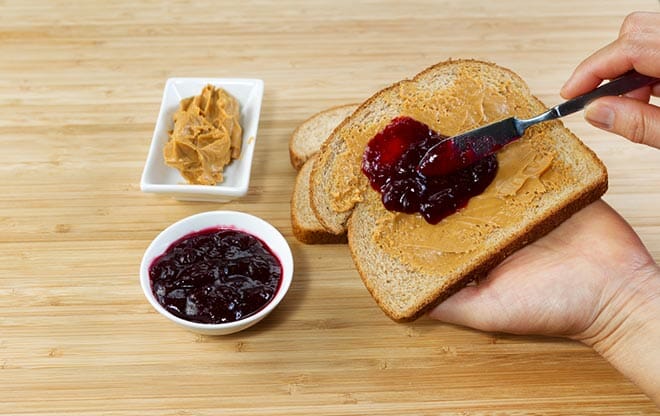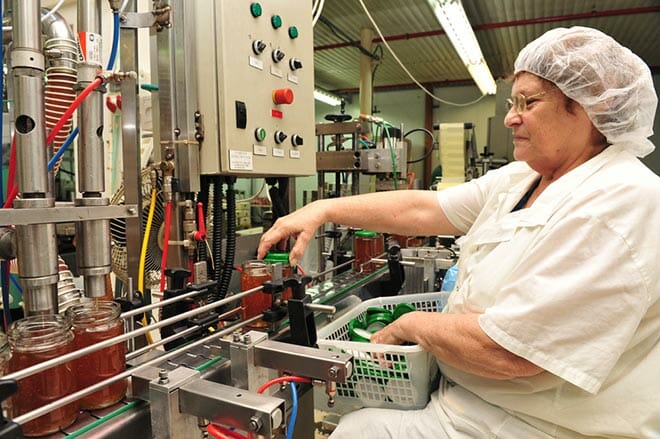In years past, there was a time when jellies and jams were only available for royalty. Today, the varieties of both available to consumers propels over $1.3 billion in annual U.S. sales, with Smucker’s and Welch’s easily leading the way. Composed of just three basic elements – fruit, sugar and pectin, making jelly is a simple process and one where wire cloth is often used as a jelly strainer. Although jams and jellies are similar, jams include the fruit meat while jellies only use the fruit juice.

Commercial jelly making: The basics
Making jelly begins with product purity and freshness. Production facilities are located close to fruit farms to minimize the time between picking and preparation – just a short 12 to 24 hours. Upon arrival, the fruit is inspected for color and ripeness, then loaded into a funnel-shaped hopper. This moves the fruit into pipes for processing through the following steps and where 3A certified strainers and wire cloth are used.
- Cleaning and crushing – Traveling through pipes, the fruit is washed to remove dirt, crushed and the juice pushed through a first set of filters to keep the fruit meat, stems, leaves and other debris out of the first production stage. Here, 3A certified strainers and wire cloth are perfect for this application, with coarse, medium and filtration level straining available of particles down to 40 microns.
- Additional filtering and pasteurization – The juice moves through another set of pipes to cooking vats. Here it is pasteurized to kill microorganisms and prevent spoilage. For jelly, the pulp is forced through another set of sanitary strainers to remove seeds and skin. Then the juice is transferred to large refrigerated tanks and pumped to cooking kettles as needed.
- Cooking the jelly – Pre-measured amounts of fruit juice, sugar, and pectin are blended in industrial cooking kettles. The ratios of sugar and pectin are important because too little pectin prevents gel formation and too little sugar results in a tough jelly. Pectin content varies according to the type of fruit and its ripeness and is often added to make up for any deficiencies. The mixtures are usually cooked and cooled three times. Once the mixture achieves the required thickness and sweetness it moves to filling machines.
- Final processing steps –Sterilized jars proceed on a conveyer system as spouts positioned above deliver the right amount of jelly into them. Lastly, labels are attached, the jars are boxed up and shipped out.

Quality required, not just for jelly
The Food and Drug Administration (FDA) requires all heat-processed canned foods be free of live microorganisms. As a result, processing plants keep detailed records of cooking times and temperatures, which are audited by the FDA. Ultra-fine wire cloth filtration also provides an initial level of screening which helps ensure pasteurization eliminates the rest.
Why Wire Cloth
Jelly making is another example of how wire cloth and sanitary strainers are used by the food industry to remove impurities from products. These screens are tightly woven to provide an adequate straining material and handle varying capacities from creeping flow rates to high volume production outputs.
In summary
To briefly review:
- Jelly making is a simple process dependent on the interaction of juice, sugar, pectin and acid.
- Wire cloth and 3A certified strainers play a key role to make jelly in the filtering of the fruit pulp into juice, and a second filtering of the juice itself.
SaniClean Strainers, a Newark Wire brand, manufactures a complete line of wire cloth and industrial 3A certified strainers, baskets, assemblies, replacement parts, and filter media suitable for a wide range of applications and capacities – not just for jams and jellies. Contact them today and get their products and expertise working for your next filtration project.
